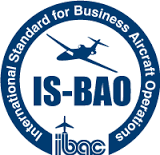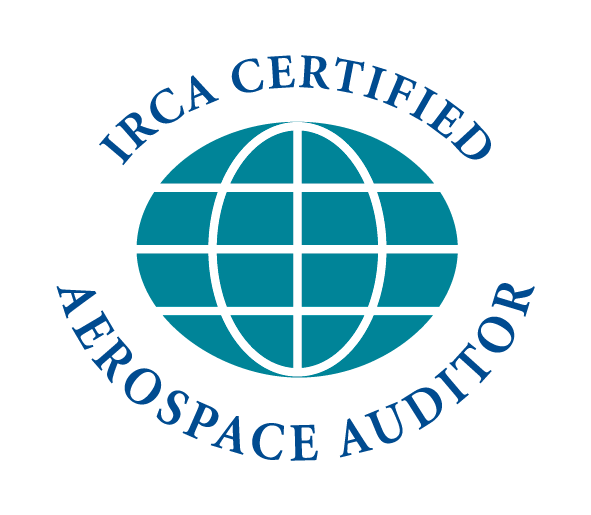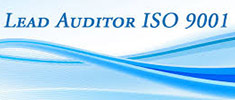Complex and Non-Complex Operators
What’s the difference between a complex and a non-complex operator?
Europe attempted to come up with a clear definition, however it’s obviously an intricate subject. In EU aviation regulations the complexity of an organization is a function of its:
- Size: are there less or more than 20 full-time equivalent employees (FTEs)?
- Complexity of the activity: for instance the number of operating sites, number and type of contractors; etc.; and/or
- Risks: are different aircraft types involved? What’s the operating environment like? Are specialized operations conducted (e.g., helicopter hoist)?
The final call ultimately resides with the National Aviation Authority of the operator.
Why make a distinction between operators considering an IS-BAO audit although it doesn’t exist in the IS-BAO Standard itself?
Every operator is different, and every audit is different, even at the same operator. However, as a courtesy to our visitors from around the world, we proactively answer your legitimate questions regarding the duration of an IS-BAO audit by providing estimates and a brief overview of the audit process based on the complexity of the operation to be audited, and on the level of SMS maturity that needs to be demonstrated. Please bear in mind that they only provide an indication of the duration of an audit. Most EU operators are likely to already know in which category they’ve been placed. In any other case refer to the guidelines below and contact us if any question remains.
Non-complex operators
Initial audit
Operators in this category would typically have up to four or five aircraft, no more than two different aircraft types in the fleet, a single base of operation and multi-talented crewmembers capable of properly managing the operation once they’re back on the ground. Continuing airworthiness management, maintenance and sometimes dispatch would be contracted but there are exceptions.
Initial audits (a.k.a. registration audits) at non-complex operators typically involve the interview of the entire staff since it’s usually a small, tight-knit and very busy team. Since each and every element of the IS-BAO audit protocol must be assessed at a Stage 1 audit, conducting the audit in a proper manner requires time (on an average 3±1 man-days) and subject matter expertise.
To reduce the duration of the on-site audit we generally perform it with a team of two auditors. Each one of them will focus on his/her own areas of expertise. Be assured that both of them will have pertinent experience in small and/or very small operations, and be able to very quickly understand your unique risks, challenges and opportunities. Since IS-BAO is scalable and performance-based, the expectations differ depending on the size and complexity of the operations. We fully support this approach and perform our audits accordingly.
Contact us with your company details and receive a free quote for your IS-BAO audit.
Non-complex operators
Renewal audit
Operators in this category would typically have up to four or five aircraft, no more than two different aircraft types in the fleet, a single base of operation and multi-talented crewmembers capable of properly managing the operation once they’re back on the ground. Continuing airworthiness management, maintenance and sometimes dispatch would be contracted but there are exceptions.
Renewal audits at non-complex operators typically involve the interview of the entire staff since the main focus of Stage 2 and Stage 3 audits is the Safety Management System (SMS). Is it functioning? Are results being measured? Are SMS activities appropriately targeted? Are safety risks being effectively managed? Since the functioning and performance of the SMS must be reviewed, conducting the audit in a proper manner requires time (on an average 3±1 man-days) and subject matter expertise.
To reduce the duration of the on-site audit we generally perform it with a team of two auditors. Each one of them will focus on his/her own areas of expertise. Be assured that both of them will have pertinent experience in small and/or very small operations, and be able to very quickly understand your unique risks, challenges and opportunities. Since IS-BAO is scalable and performance-based, the expectations differ depending on the size and complexity of the operations. We fully support this approach and perform our audits accordingly.
Contact us with your company details and receive a free quote for your IS-BAO audit.
Complex operators
Initial audit
Operators in this category would typically have between five aircraft and several dozens of them, at least three or four different aircraft types in the fleet, multiple bases of operation and a solid management team at the company’s headquarters on at least a half-time, if not a full-time, basis. Continuing airworthiness management and operational control would usually be performed internally. Most maintenance would be contracted but it’s not unusual to see line maintenance or even heavy maintenance being performed in-house as well.
Initial audits (a.k.a. registration audits) at complex operators typically involve the interview of a representative sample of all management positions with the participation of only a few crewmembers. Since each and every element of the IS-BAO audit protocol must be assessed at a Stage 1 audit, conducting the audit in a proper manner requires time (on an average 4±1 man-days) and subject matter expertise.
To reduce the duration of the on-site audit we generally perform it with a team of two auditors. Each one of them will focus on his/her own areas of expertise. Be assured that both of them will have pertinent experience in medium or large operations, and be able to very quickly understand your unique risks, challenges and opportunities. Since IS-BAO is scalable and performance-based, the expectations differ depending on the size and complexity of the operations. We fully support this approach and perform our audits accordingly.
Contact us with your company details and receive a free quote for your IS-BAO audit.
Complex operators
Renewal audit
Operators in this category would typically have between five aircraft and several dozens of them, at least three or four different aircraft types in the fleet, multiple bases of operation and a solid management team at the company’s headquarters on at least a half-time, if not a full-time, basis. Continuing airworthiness management and operational control would usually be performed internally. Most maintenance would be contracted but it’s not unusual to see line maintenance or even heavy maintenance being performed in-house as well.
Renewal audits at complex operators typically involve the interview of a representative sample of all management and non-management positions, including crewmembers and mechanics (if any); since the main focus of Stage 2 and Stage 3 audits is the Safety Management System (SMS). Is it functioning? Are results being measured? Are SMS activities appropriately targeted? Are safety risks being effectively managed? Since the functioning and performance of the SMS must be reviewed, conducting the audit in a proper manner requires time (on an average 4±1 man-days) and subject matter expertise.
To reduce the duration of the on-site audit we generally perform it with a team of two auditors. Each one of them will focus on his/her own areas of expertise. Be assured that both of them will have pertinent experience in medium or large operations, and be able to very quickly understand your unique risks, challenges and opportunities. Since IS-BAO is scalable and performance-based, the expectations differ depending on the size and complexity of the operations. We fully support this approach and perform our audits accordingly.
Results from one or more safety culture survey(s) would be an asset, but there’s no clear expectation on this matter unless your company is aiming for a Stage 3 audit.
Contact us with your company details and receive a free quote for your IS-BAO audit.




